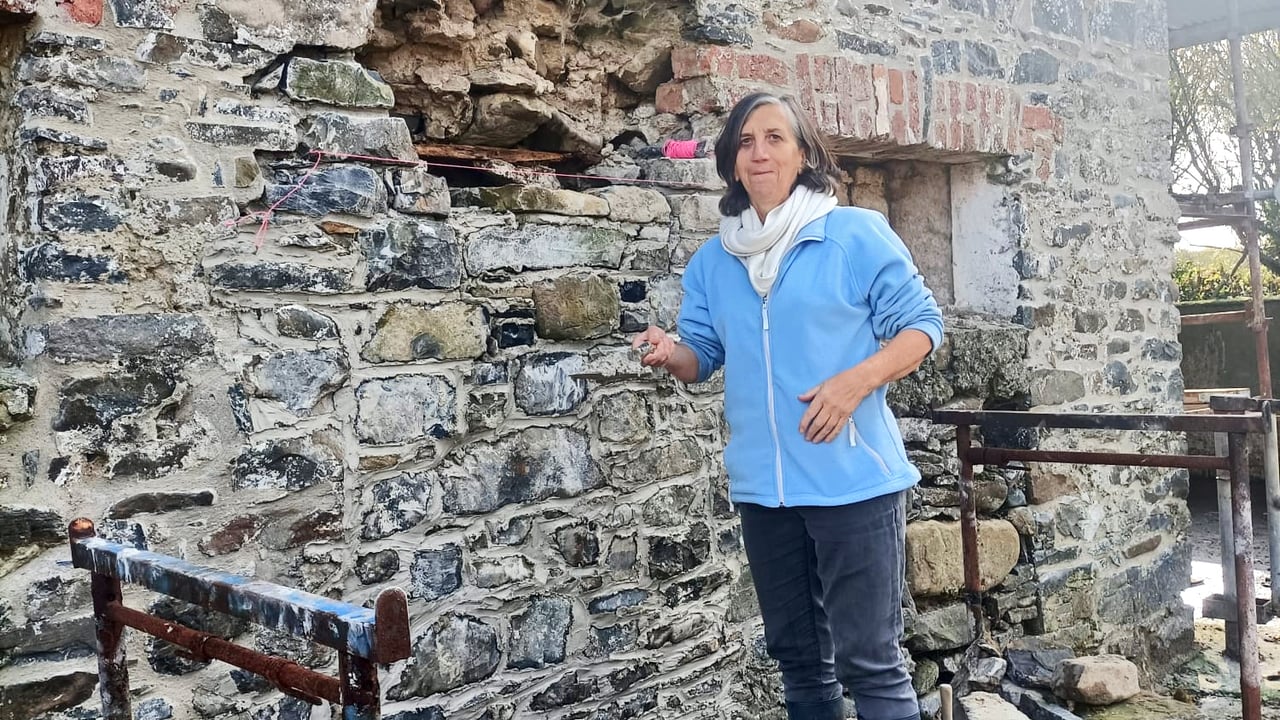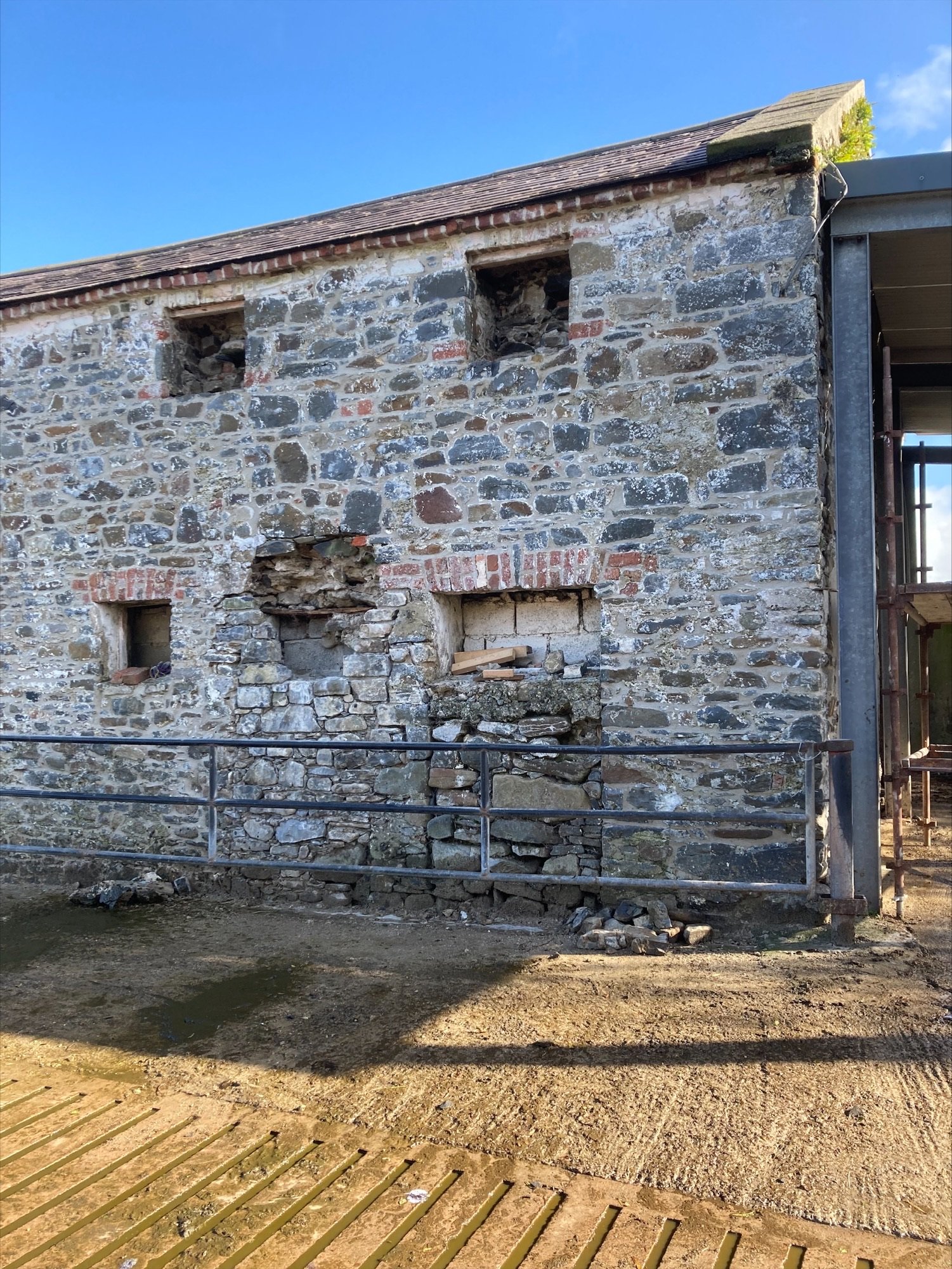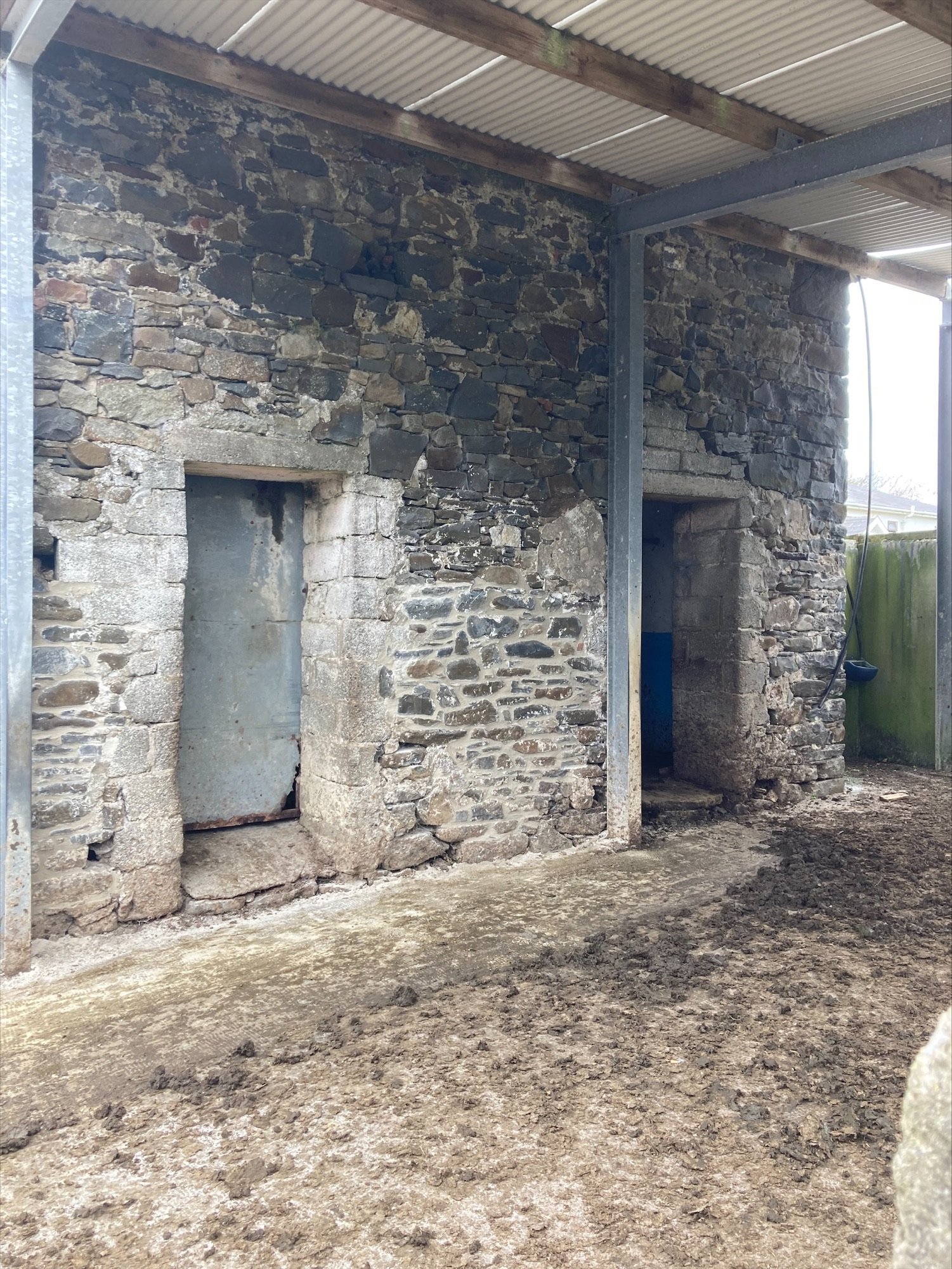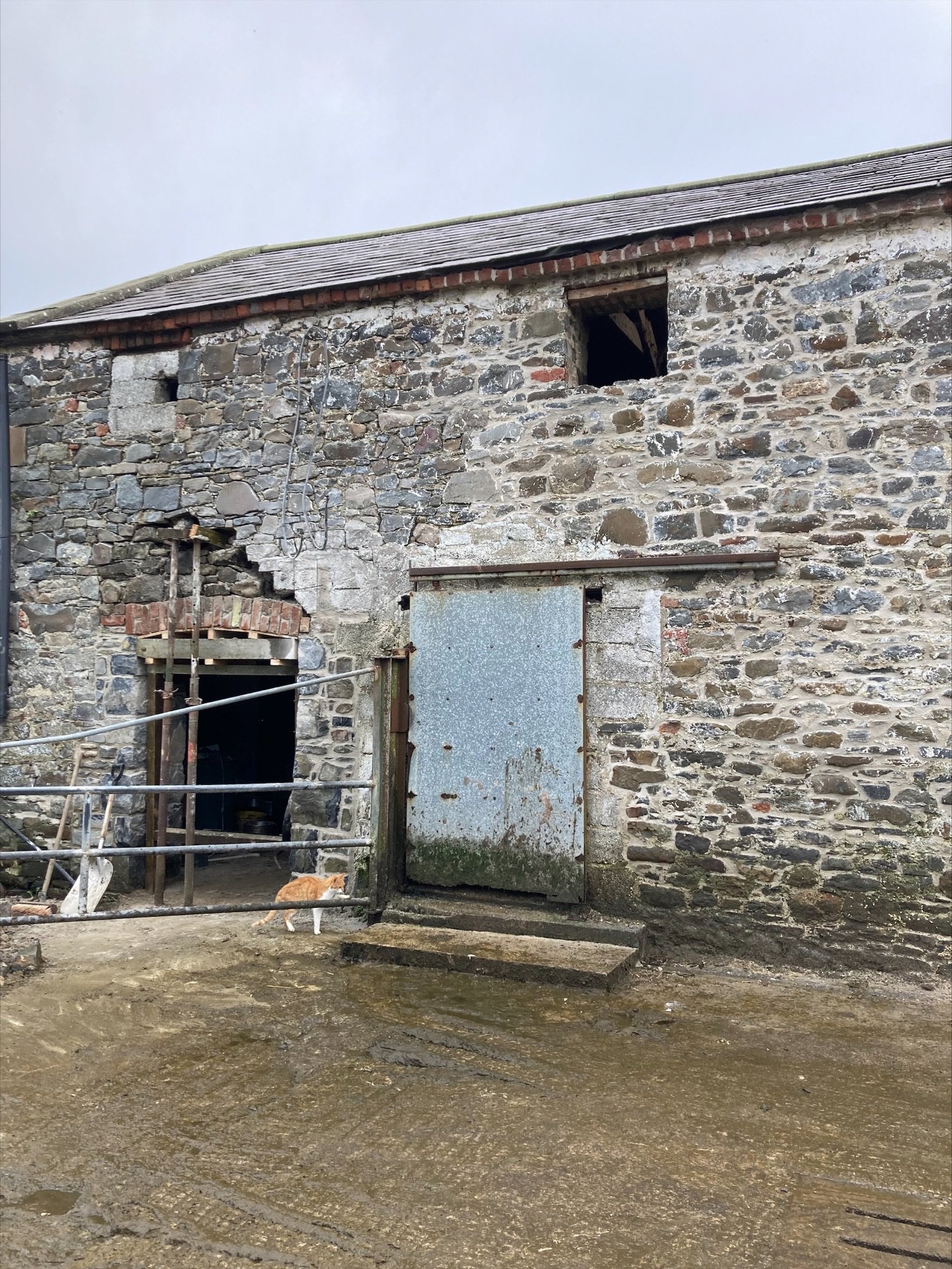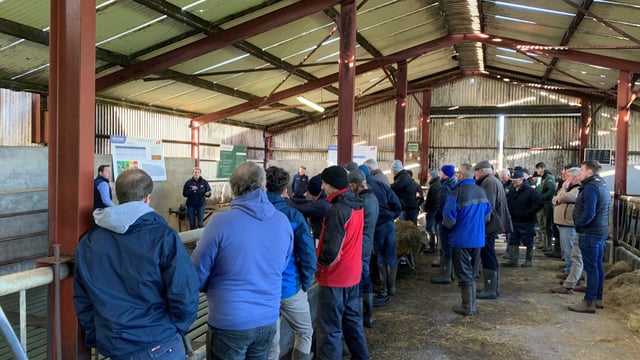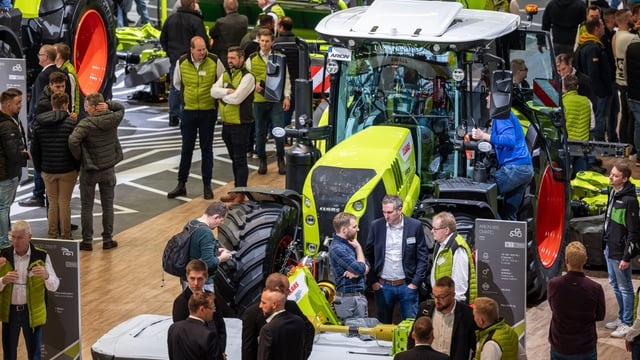Back to glory: GLAS grant helps repair stone barn in Kerry
"It's all a bit mental, but fun," Kate Carmody told Agriland as a project to repair a 200-year-old stone barn on her north Kerry farm enters its final weeks.
The organic dairy farmer has lived in Beal with a stunning vista of the Shannon estuary and the coast of neighbouring Co. Clare for 38 years now.
The cheesemaker and hemp grower, who holds a qualification in biochemistry, has been a participant in Green Low-Carbon Agri-Environment Scheme (GLAS) for the past seven years.
"Being an environmentalist, I've always liked GLAS," she said.
The barn at Beal Lodge appears on a map dating from 1840 and also shows the stone stable and coach house still standing in the farmyard today.
The holding, then part of the estate of Lord Listowel, included a single-storey hunting lodge later replaced in 1939 by a two-storey stone house where Carmody lives.
This year, she was successful in securing funding of just under €10,000 in the GLAS Traditional Farm Buildings Grant Scheme.
Issues with labour hampered two previous attempts to repair her beloved barn.
"This year, it's third time lucky. I actually have some brilliant stonemasons helping and it's really working out well," she said.
"It's about repair of farm buildings and not restoration. I think that's important because you have to use the building for farming purposes."
'The Beal barn', as she calls it, was converted into a milking parlour many years ago.
"It's about keeping the functionality of the building as a milking parlour but repairing so it's back to its glory, which is where its headed at the moment," Carmody added.
Changes over the decades had taken a heavy toll on the barn.
"For the repair, we're keeping the two entrance doors where the cows go in because we have to. We're plastering the concrete blocks as it would be too big a job to take out the concrete and put in stone.
"But we've taken out all the concrete above and put back stone, so it will have its character there," she explained.
The team is also working to reincorporate doorways which had been blocked up including one which had caused a large crack in the main wall of the building.
This was a "big worry" and among the main reasons for Carmody wanting to repair the barn.
"We took out all the stone there and it's been rebuilt from the ground up and the crack has been repaired using hydraulic lime, a traditional mixture, so it looks really good," she said.
The project has also seen the reinstatement of an arch which had been demolished to allow for the installation of a bulk milk tank in the 1980's.
The farmer is not afraid of hard work and has helped with the repairs along with the two French students.
The stonemasons, who she learned of through word of mouth, work on the farm at weekends.
The farmer previously repaired the storm-damaged roof of the barn with Bangor blue slate and brass screws "to make sure it would last another 200 years", she said.
Although grateful for the GLAS grant aid scheme, which funds up to 75% a project's cost, Carmody feels it could be made more attractive.
"It makes it feasible but like everything you have to pay out the money before you get it back," she said.
"This is one of the big problems in Ireland at the moment and maybe this is where the Strategic Banking Corporation of Ireland (SBCI) should actually step in and offer bridging money to farmers and all our heritage projects."
The start of the project in Beal was delayed due to swallows nesting in the loft of the barn.
"They had a great year. They had three clutches and with five fledglings each time. In fact, I thought at one stage they weren't going to move out they were so happy," the farmer said.
With the arrival of a "cold, wet, miserable day", the swallows took flight and the repair work could begin.
Carmody is planning to have the project completed within the next two to three weeks.
"It will look fabulous. All the violation of the building will be invisible," she said.

